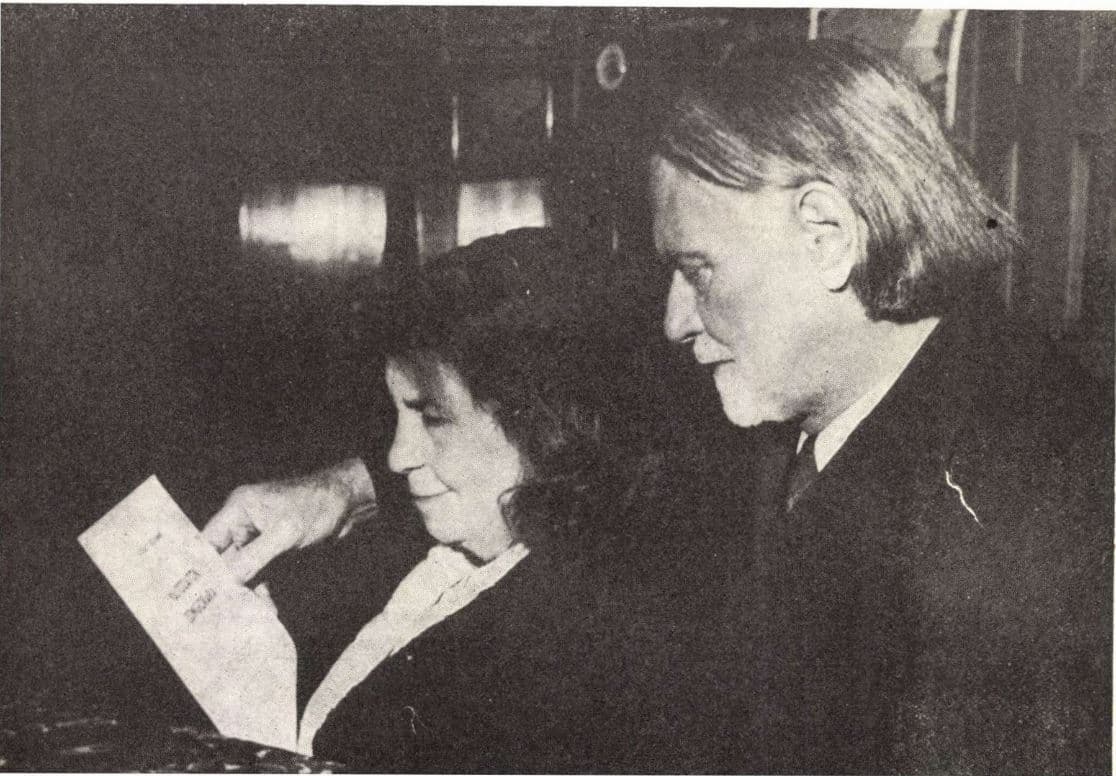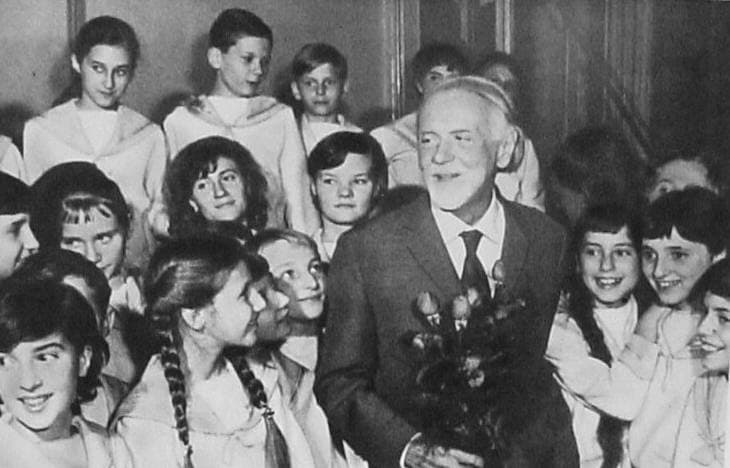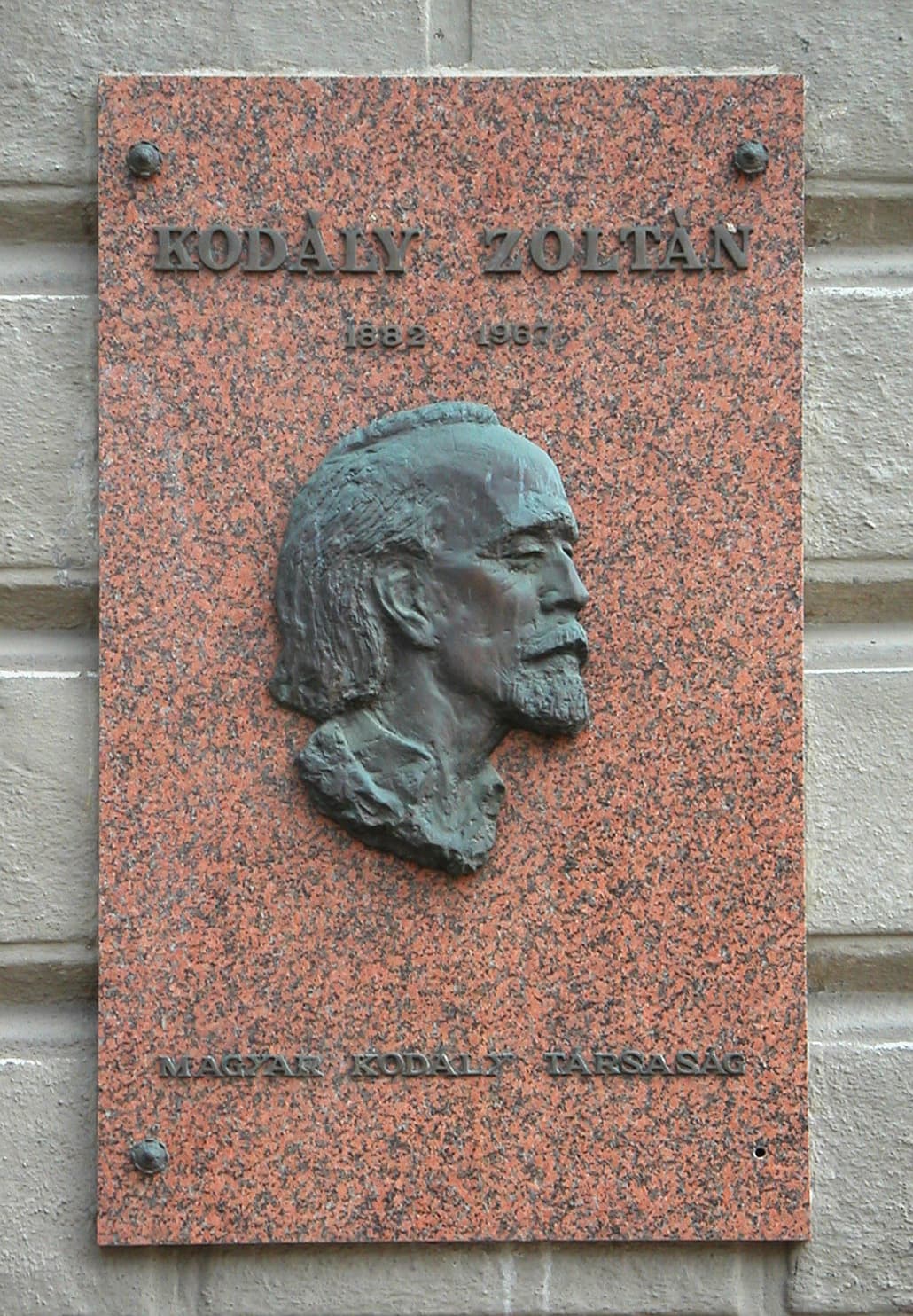Zoltán Kodály died on 6 March 1967 at the age of 84 in Budapest. At the time of his death he was universally recognised as a composer, pioneering ethno-musicologist, ground-breaking educator, and music critic. The “Kodály Method,” created by colleagues, friends and students who implemented his ideas is now an international method of music education. In fact, in 2016, the Kodály Method was recognized by UNESCO as an Intangible Cultural Heritage.
Zoltán Kodály: Mohács (Hungarian Radio and Television Chorus; Zoltan Vasarhelyi, cond.)
Commendations

Zoltán Kodály
One of the major figures in twentieth century music, Kodály enjoyed a status in his native land that is perhaps unrivalled by any other figure anywhere else in the world. He received high government decorations in 1947, 1952, and 1962, and three Kossuth Prizes in 1948, 1952, and 1957, respectively. In addition, the Hungarian Academy of Sciences issued commemorative volumes for his 70th, 75th, and 80th birthdays.
Internationally, he was awarded honorary doctorates by the universities of Oxford (1960), East Berlin (1964) and Toronto (1966), and honorary membership of the Belgian Academy of Sciences (1957), the Moscow Conservatory (1963) and the American Academy of Arts and Sciences (1963). In addition, he was made president of the International Folk Music Council (1961) and honorary president of the International Society of Music Education (1964).
Zoltán Kodály: Hymn of Zrinyi (Zoltan Batki Fazekas, baritone; Debrecen Kodaly Choir; Istvan Parkai, cond.)
The Mission

Zoltán Kodály and Emma Gruber
Kodály’s wife Emma Gruber died on 22 November 1958, after a happy and harmonious marriage lasting 48 years. One year later, Kodály married Sarolta Péczely, his 19-year-old godchild and student at the Franz Liszt Academy of Music, with whom he lived happily until his death. His compositional career spans seven decades, and this “exceptionally long period of creativity is entirely devoid of spectacular turns.” Kodály kept on composing until his last days, and his final compositions featured in this article, show his creative powers undiminished.
Kodály was in good health all his life and during his last years he took long trips abroad, lecturing in English, French, German and Italian. During his lecture tours, he presented papers on specific musical aspects of Hungarian folk songs and a broader notion of how art music evolved from folk music. Reinforcing his life’s work and mission, he championed ethnomusicological investigation as the source of artistic inspiration. Kodály was adamant that music should become an organic part of the school curriculum, and he lived long enough to see it implemented worldwide.
Zoltán Kodály: Symphony in C Major (Philharmonia Hungarica; Antal Doráti, cond.)
An Educational Vision

Kodály strongly believed that the development of instinctive perception and training and not sophisticated lectures, bring people nearer to music. And singing was the fundamental aspect of his approach to a music education system rooted in social democracy and cultural experiences. As he famously wrote, “our age of mechanization leads along a road ending with man himself as a machine: only the spirit of singing can save us from this fate.” He realised that most young people lacked understanding of music, and he called it a “state worse than illiteracy.”
Beginning in the early 1930s, Kodály spent more and more time on children’s emotional and aesthetic education. He asserted that teaching musical concepts, creativity, and collaboration are best taught in group school lessons, particularly for young children. “Teach music and singing at school in such a way,” he explained, “that it is not a torture but a joy for the students. Instill a thirst for finer music, a thirst which will last for a lifetime.”
Zoltán Kodály: Laudes organi (Brighton Festival Chorus; Gillian Weir, organ; Laszlo Heltay, cond.)
An Educational Method

Zoltán Kodály commemorative plaque
Kodály’s ideas became part of the official curriculum of Hungarian schools in 1945. Rapidly gaining international recognition around the world, his ideas adhere to a number of key principles. As the human voice was the fundamental instrument for Kodály, students should gain musical literacy through sung solfège using a moveable-do system.
Solfège and sight-singing can be supplemented by hand signs, as developed by the English pedagogue John Curwen, and rhythmic proficiency should be taught alongside tonal solfège and not as an independent element. For Kodály, musical collaboration was central to musical education, with students collaborating in musical exercises that emphasise and reinforce social connection. Finally, there must be a cultural connection with instructors emphasising folk music or pop songs in a student’s mother tongue to create a “visceral connection to music.
For more of the best in classical music, sign up for our E-Newsletter
